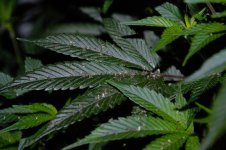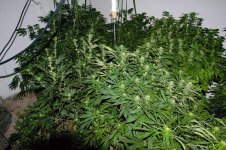
This plant has a brix of 12. It is in a new soil that has not developed insect larva predators yet...these fungus gnats popped out of the soil, landed on these leaves and their life ended. It is the enzyme co factors that allow this to happen. I have no fear of insect or disease in these plants.
edit...the waxy look develops because the plant has formed a lot of phopho lipids...those will prevent fungus from being able to get to the Ca Pectate that it wants to feed on.
Brix is important, I agree, but there is more to plant health than simply brix is all I am saying.




